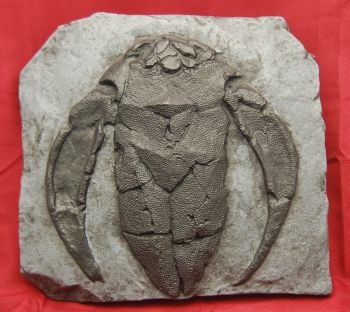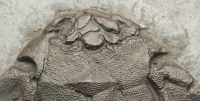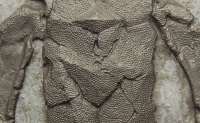
Pterichthyodes is a genus of antiarch placoderm fishes from the Devonian period. Its fossils have been discovered in Sandwich Fish Beds of Ouoyloo, Orkney Islands, Scotland. They were one of the first species recognized for what they were, as their fossils are common in the Old Red Sandstone formation studied by geologists in the early 19th century. Due to their extreme divergence from modern-day fish, they were a puzzle unsolved until Charles Darwin brought forward his theories on evolution.
As with all other antiarchs, Pterichthyodes had heavily armored heads and fore bodies, while their scaly tails were unarmored. Specimen length ranges from 8 inches (20 cm) to 12 inches (30 cm). As placoderms, they were members of the earliest known vertebrates to possess jaws, though they had grinding plates rather than teeth. The generic name of Pterichthyodes refers directly to their odd wing-like appendages ("pterichthys" being a compound crassis word from Ancient Greek for "wing-fish"), which correspond to and were derived from the pectoral fins seen in modern fish and other non-antiarch placoderms. Fossils of Pterichtyodes showing eyes positioned on the top of the head and a "ventrally flattened trunk shield" suggest that it was a "bottom dweller", living at the bottom of lakes, where it might have crawled using its pectoral appendages. It has also been theorized that Pterichthyodes and other antiarchs used these appendages to bury itself.
resin
9.5 x 9 x 1 inches
Item 3139
Category: Replicas
Type: Skeletons
Phylum: Vertebrates
Class: Fish
MORE PHOTOS:




Now Over 1,000 Items!
PrehistoricStore.com offers the largest selection of replica fossils and other fossil-related products anywhere in the world!
Download a Full Catalog (3MB PDF)
OVER 260 PAGES OF REPLICAS AND MORE!
